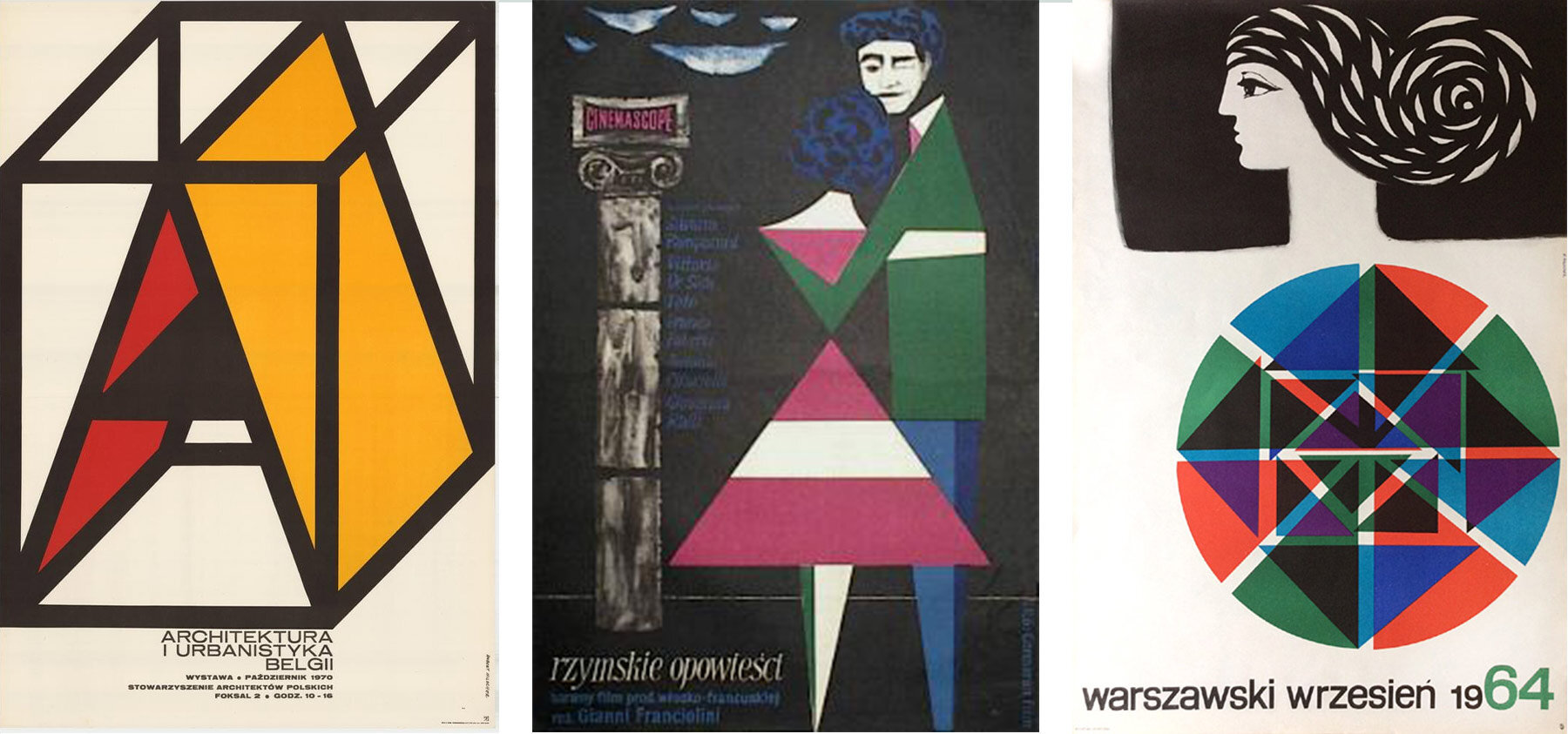Hubert Hilscher: A modest super talent who brought architectural balance to graphic art
Hubert Hilscher
25.10.1924 - 19.09.1999
Despite being always humble about his work, Hubert Hilscher was a highly influential and internationally acclaimed poster artist from the Polish School of Posters and one of the key founders of the Poster Biennale. He was also the creative driving force behind Projekt magazine, where he was art director for 22 years, and an award winning book designer. Born in Warsaw on 25.10.1924, he passed away 75 years later on 19.09.1999; for an artist who bought such balance and structure to his work, there seems a kind of poetic symmetry to that date.
Hubert Hilscher’s father was of German origin and the family had moved to Dobra Street in Warsaw in search of work. Hilscher was always very modest and never stopped referring to himself ‘the boy from Powisle’. As a youngster Hubert loved playing football and dreamt of being an architect, but his training was thwarted by the war. During the occupation he managed to continue his studies at the Warsaw University of Technology, in secret classes held by the professors, whilst also enrolling as a soldier in the insurgent and underground Home Army. During the Warsaw Uprising he fought for three days and he continued in service until 1949 when he was released for health reasons.
Unsurprisingly Hilscher’s experience in the military made a lasting impression. A later friend and artistic collaborator Danuta Wroblewska said years later “Hubert carried out his graphic tasks the way one conducts successful operations on the battlefield. Clearly evident in this was the preparation, purposeful selection of the necessary means, and visible tactics and strategy. Never any improvisation”.
POSTERS BY HUBERT HILSCHER | ARCHITECTURE + URBAN PLANNING OF BELGIUM - 1970 | ROMAN TALES (FILM) - 1958 | WARSAW SEPTEMBER - 1964
It was after leaving the army that Hilscher’s journey with the Polish School of Posters began. He decided not to pursue architecture and enrolled at the School of Fine Arts in Warsaw to train as a printer. Whilst he was there, the school combined with the Academy of Fine Arts and, after two years of study Hilscher (a good few years older than most other students) was accepted into Professor Tadeusz Kulisiewicz’s studio where he earned a degree in printmaking.
However, it was graphic design which became his passion. It turned out the design jobs which Hilscher had taken to supplement his studies - on large-scale exhibition projects under the most incredible artists of the day such as Henry Tomaszewski, Wojciech Fangor and Jan Lenica - gave him the all the skills and techniques he needed to become one of Poland’s leading graphic artists in his own right.
HUBERT HILSCHER CYRK (CIRCUS) POSTERS | TIGER ON A HOOP - 1966 | TALKING MONKEY - 1973 | STRIPY CAT - 1975
Meanwhile Hilscher’s architectural background gave his compositions a distinctive structural and geometric quality. He was also a pragmatist who appreciated order and harmony and this is evident in his work.
He designed mainly exhibition and music posters over his career along with film posters, sport posters and some more whimsical Cyrk (circus) posters which were more colourful and characterful (but still very balanced).
But whilst Hilscher had his own style, which demonstrated his appreciation for space and order, it was also diverse. He injected humour and fun into his circus posters, which often featured unreal images of animals, working with pop art colours straight from the tube. He said the animals were purposefully unreal as the lion people wanted to see in a circus was not the same as a lion they wanted to see in the zoo.
He experimented with the ability of graphic art to depict musical form to great effect, by using structured repetition, colour and pattern in his series of posters for the annual Warsaw Autumn music festival. Hilscher loved music and would listen to vinyls of Albinoni, Sibelius and Tchaikovsky whilst working.
HUBERT HILSCHER MUSIC FESTIVAL POSTERS | WARSAW AUTUMN - 1971 |1973 | 1981
Hilscher’s Polish posters have won many awards around the world, but he also made a huge impact on graphic design in other ways. His prolific output in the world of book design was much admired with many of his designs winning awards in the Most Beautiful Book of the Year competitions.
In 1964 the legendary artist Jozef Mroszczak asked him to help set up the very first Poster Biennale in Warsaw. He became deputy chairman of the organising committee and then president after Mroszczak’s death - as well as entering many posters himself to the competition over the years.
During the entire sixties and seventies he was art director of Projekt - the bi-monthly arts magazine (partly responsible for our Projekt 26 name!). He was not only phenomenally creative in this role - overseeing a radical redesign of the layout - but also oversaw the entire printing process; the printing house called him an ‘engineer’ as he was so professional and meticulous.
Hilscher was an extremely talented graphic designer. His work remains as inspiring and effective today as it was when he created it, but he always downplayed his endeavours. He said “My job is just like that of a printer, a carpenter, or a clerk. This is the way I earn my living. I don’t consider myself an artist*”.
* But we most definitely do!
RESEARCH REFERENCES, WITH HUGE THANKS TO:
Article by Sylwia Giżka, www.culture.pl
Very Graphic, Polish Designers of the Twentieth Century, edited by Jacek Mrowczyk




